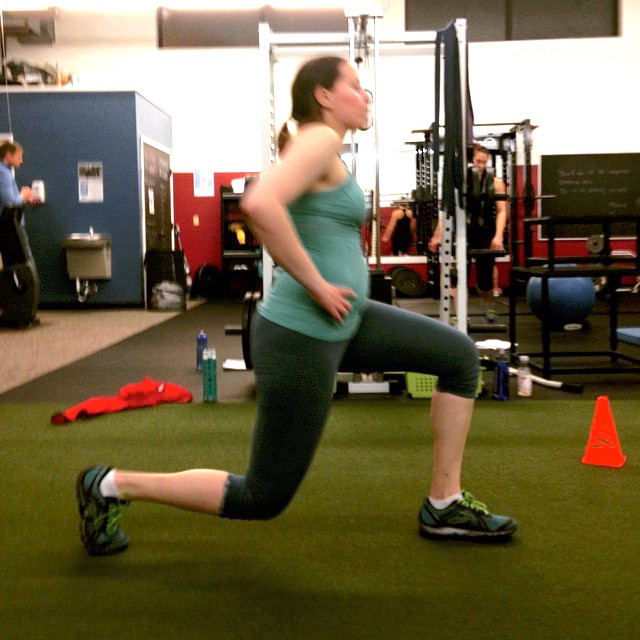If you read my previous blog post on why squats are such a good exercise and should be included in your workouts, you should have a good understanding of why lunges are also so important. If you haven’t read my squats blog yet, you can catch up here.
To summarize:
- Lunges are a compound exercise – They make you use multiple joints and muscles to complete the movement (hips, knees, and ankles)
- Lunges are a functional movement – They translate into activities of daily living and other sport-related and everyday activities
- Lunges are versatile – They can be done almost anywhere and there are tons of variations to keep things new and exciting
- Lunges improve bone health – They are a weight-bearing exercise that can help maintain or improve bone density
- Lunges improve your balance, core, and stabilization – Not only are the major muscle groups of the legs activated during the exercise, but you also need to recruit your core and other stabilizing muscles
There are also a few added bonuses to doing lunges:
Lunges are even better for improving balance – Because lunges are a single leg exercise they require even more coordination than squats. When you take a step into the lunge position (either front, back, or to the side) you are shifting your center of gravity to a new position. Anytime you alter your base of support and center of gravity, your body needs to adjust to its new positioning in space and be able to support itself. This activates more core and stabilizing muscles and puts more of a strain on your proprioceptive system, which is responsible for knowing where your body is in space and in relation to itself.
Lunges improve muscle imbalances and improve symmetry – As I mentioned before, lunges are a single leg exercise, meaning only one side of the body is being stressed at a time. When you do double sided exercises (double leg squats or deadlifts) one side of the body is able to handle more of the load than the other while still being able to complete the exercise. If you have a muscular imbalance and are more dominant on one side compared to the other (for example, you’re a righty and do most of your tasks on that side) that side is able to overcompensate for any weaknesses on the contralateral side. If you only focus on double-legged (or double-armed) exercises you are furthering these imbalances. That’s why it’s so important to include single-sided exercises into a workout, you are forcing both sides to be activated. This will improve your symmetry and help to prevent injuries, which are often caused by muscle imbalances.
Lunges improve hip flexibility – When you do a lunge you probably notice there is a slight pull in the front hip area of your back leg. That’s because you are stretching your hip flexors. The primary hip flexors are your iliacus and the psoas major, commonly referred together as the iliopsoas, and to a lesser extent the rectus femoris, which is part of your quads. The iliopsoas connect from your pelvis and lower back to your femur, aka the thighbone, and are responsible for the motion of lifting your knee towards your chest. The hip flexors are chronically tight for most of the population, and this tightness is only exacerbated by sitting at a desk for extended hours or via a sedentary lifestyle. By performing lunges as part of a dynamic warm-up or during the main workout you are stretching out this muscle group and increasing the flexibility and range of motion of the hip joint. This can help with your form during other exercises and can potentially improve low back pain.
There are plenty of different ways to perform a lunge, a couple of popular ones you will see at The Fitness Lab are:
- Forward Lunge – Starting with feet shoulder width apart take a big step forward with one leg and drop your hips straight down so that both of your knees from 90 degree angles. Make sure you are stepping straight ahead and not towards the midline (imagine your feet are on skis moving in a straight line forwards and back) and that you are taking a large enough step forward that your front knee is not going past your toes.
- Reverse Lunge- Same process as the forward lunge, but this time you are taking a large step backwards.
- TRX Suspended Lunge – Putting your back foot into the straps of the TRX system, bend into a lunge position as your suspended leg moves back and down until your front knee reaches a 90 degree angle.
- TRX Balance Lunge – Holding onto the TRX handles, pick one foot up off the ground and move into a reverse lunge without letting the back leg touch the ground.

